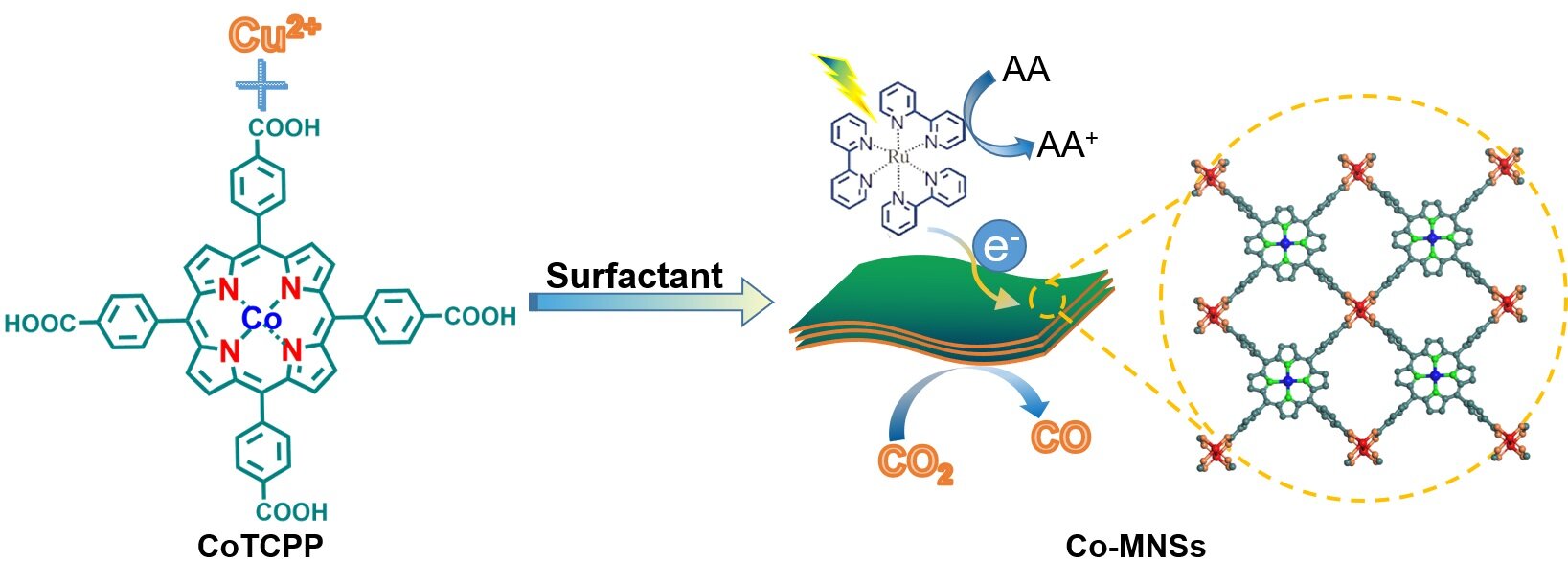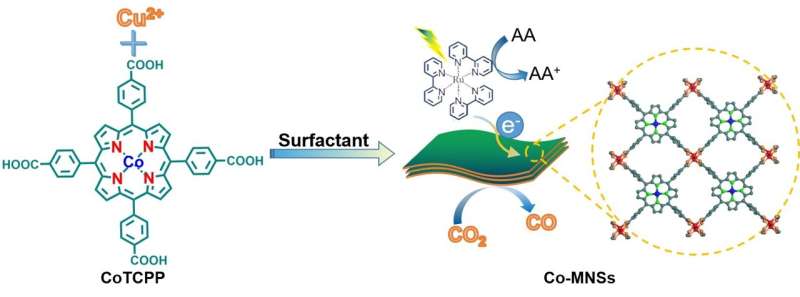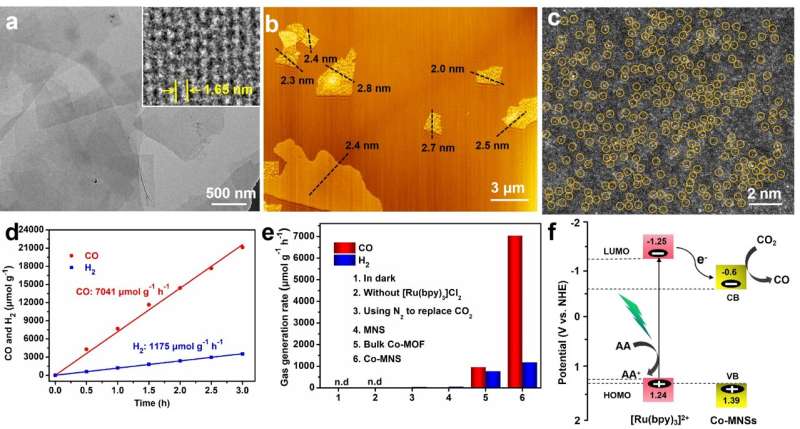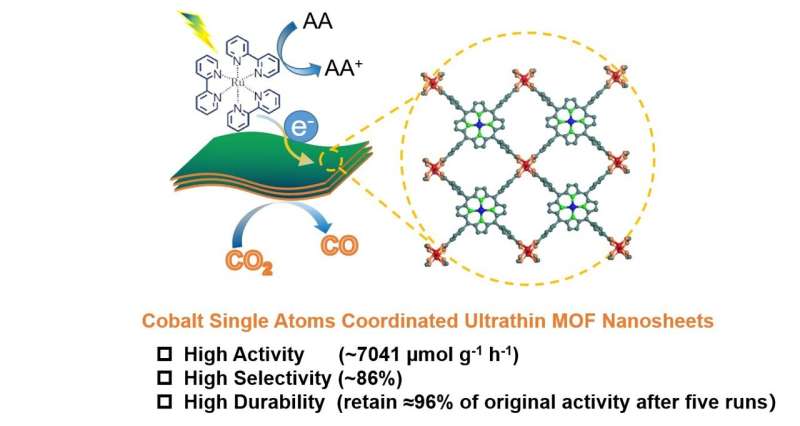

Using solar energy to convert CO2 into synthetic fuels is currently one of the most promising technologies to achieve carbon neutrality with the embedment of sustainable energy into our modern economy. However, the efficiency of photocatalytic CO2 conversion is greatly limited due to the high thermodynamic stability of CO2 molecules and their multiple-electron-reduction process.
The synthesis of stable single-atom catalysts with high metal loading is desirable to boost photocatalytic CO2 performance, which, however, has remained a great challenge. To overcome this challenge, a study was performed by the groups of Prof. Yongfeng Zhou and Prof. Yiyong Mai (School of Chemistry and Chemical Engineering, Shanghai Jiao Tong University).
They developed a bottom-up synthetic strategy for the construction of ultrathin MOF nanosheets coordinated with Co single atoms, by directly using CoII tetrakis(4-carboxyphenyl) porphyrin (CoTCPP) as the linkers and Cu2–(COO)4 paddlewheel cluster as the metal nodes. The bottom-up strategy avoids the tedious exfoliation processes and low yields encountered in top-down synthetic approach.
Moreover, because the Co sites were coordinated within the porphyrin rings before the MOF formation, Co single atoms with a high loading of 6.0 wt.% were achieved on the MOF nanosheets. The obtained MOF nanosheets showed an ultrathin thickness of 2.4 ± 0.5 nm and micron-sized lateral dimension.

Such a large aspect-ratio 2-D morphology coupled with the high content of Co single atoms enabled abundant accessible active sites on the catalyst surfaces, and also effectively inhibited the electron–hole recombination by shortening the diffusion length of charge carriers from the material interior to the surface.
As a catalyst for visible-light-driven photocatalytic CO2 reduction, Co-MNSs exhibited a high CO2-to-CO production rate of 7,041 μmol g−1 h −1 and a remarkable selectivity of 86% in aqueous media under λ > 420 nm light irradiation, which is among the top-level performances of the reported MOF-based photocatalysts.

This study opens a new avenue for the synthesis of 2-D stable single-atom catalysts with high loading of single metal atoms, and also stimulates future endeavors to develop efficient photocatalysts for important yet thermodynamically uphill reactions.
The study is published in the journal Science China Chemistry.
More information:
Quan Zuo et al, High-loading single cobalt atoms on ultrathin MOF nanosheets for efficient photocatalytic CO2 reduction, Science China Chemistry (2023). DOI: 10.1007/s11426-022-1498-y
Provided by
Science China Press
Citation:
High-loading single cobalt atoms on ultrathin MOF nanosheets for efficient photocatalytic carbon dioxide reduction (2023, March 15)
retrieved 16 March 2023
from https://phys.org/news/2023-03-high-loading-cobalt-atoms-ultrathin-mof.html
This document is subject to copyright. Apart from any fair dealing for the purpose of private study or research, no
part may be reproduced without the written permission. The content is provided for information purposes only.